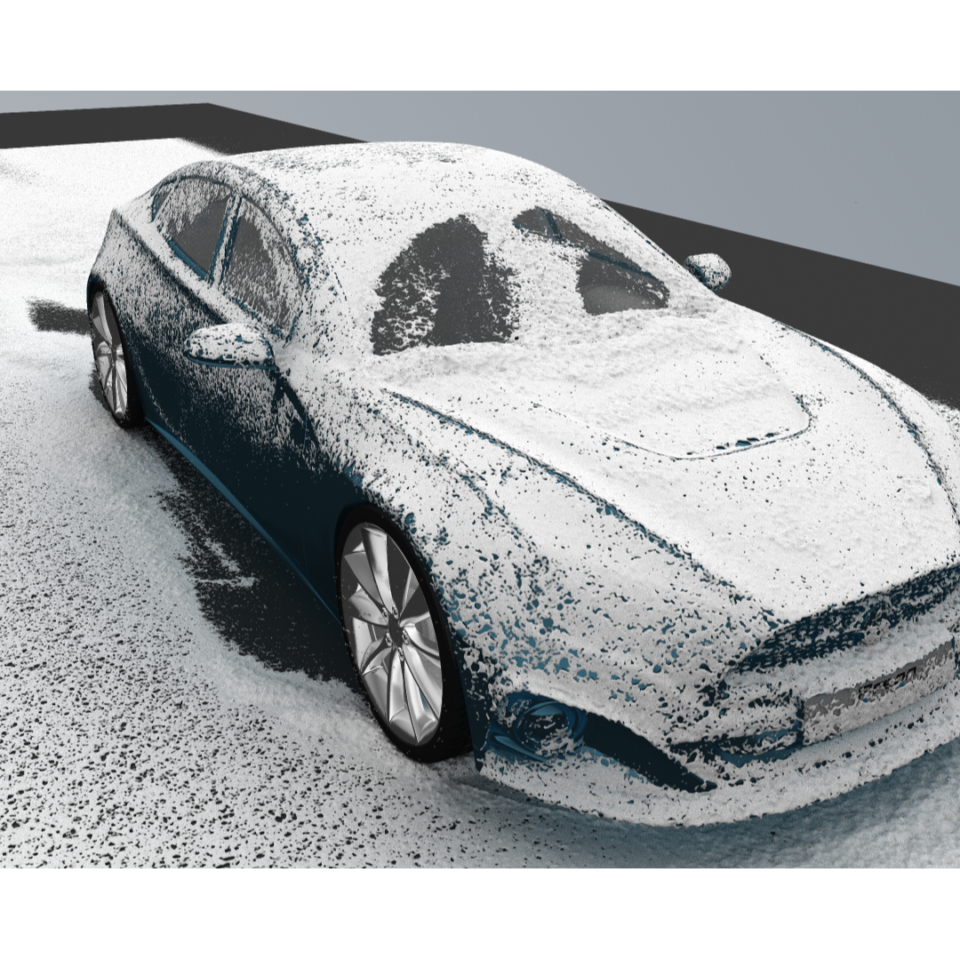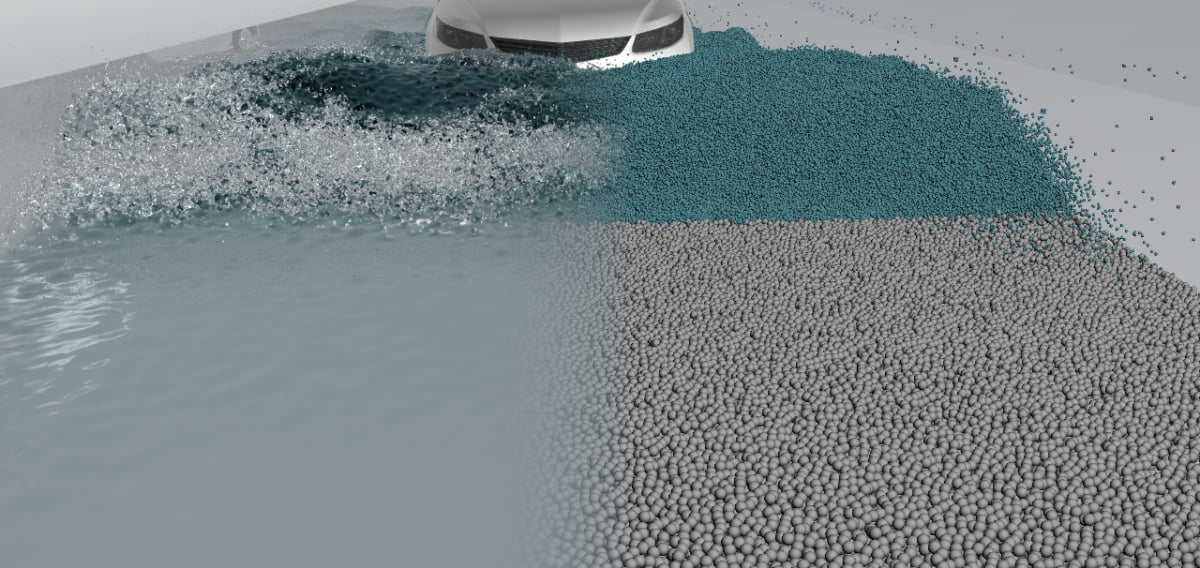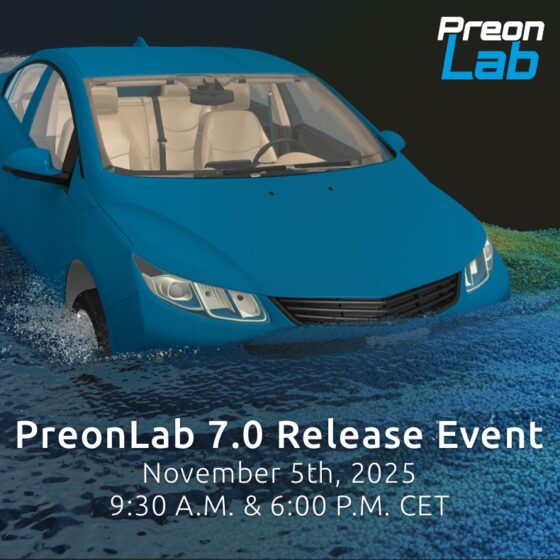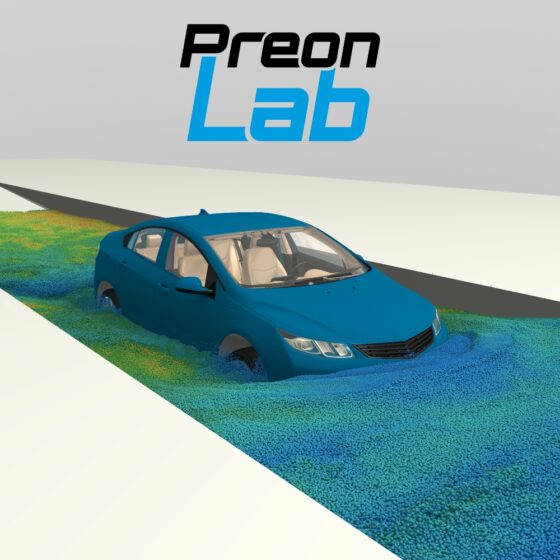Release
PreonLab 4.0 Released

We are very excited to announce the release of PreonLab 4.0. This major release expands, improves, and accelerates the core capabilities of PreonLab, highlighted by the following features:
- Snow solver: PreonLab continues to push the boundaries of particle-based simulations with the introduction of a semi-implicit snow solver.
- More accurate fluid solver: The updated Preon solver is able to capture even more phenomena and requires less parameter calibration.
- Implicit thermodynamics solver: The thermodynamics solver now supports much larger timesteps via implicit integration, greatly improving performance.
- Local fluid refinement (experimental): It is now possible to use two particle sizes in the same simulation, reducing computation time and the amount of generated particle data.
This is just a selection of new features. PreonLab 4.0 is a truly massive update that also introduces improved file management, enhanced rendering capabilities, air pressure force fields, faster MPI, an improved car suspension model, arbitrarily shaped volume sensors and much more. We will publish videos showcasing some of the new features in the coming weeks.
Make sure to follow us on LinkedIn so that you don’t miss them!



